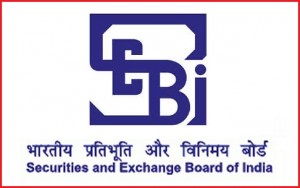In this blog post, Varun Prakash, who is currently pursung his masters from GNLU and is also pursuing a Diploma in Entrepreneurship Administration and Business Laws from NUJS, Kolkata, writes about the key features of the SEBI (Underwriters) Regulations.
The SEBI (Underwriters), Regulations, were framed to deal with the issues concerning registration of the underwriters, capital norms and adequacy, and obligations and responsibilities of the underwriters. And hence the regulations mentioned above were legislated and notified on October 8, 1993. Now, before we examine the key features of underwriter’s regulations, we must have an insight into the background about the underwriters and why a need for the regulations arose.
Traditionally, the underwriting services were provided by the financial institutions, banks, members of the stock exchange and persons with adequate financial resources, the desired worth and experience. To do away with this abstract framework, Rule 3(1) of the Securities and Exchange Board of India (Underwriters) Rules, 1993 was introduced which laid down that no person can act as underwriter unless he holds a certificate granted by SEBI under the Securities and Exchanges Board of India (Underwriters) Regulations, 1993. As per Rule 3(2), an exemption in this regard was provided to the merchant banker or stock broker holding a valid certificate of registration under Section 12 of Securities and Exchange Board of India Act, 1992 to obtain a separate certificate for underwriting. Rule 4(b) of the Securities and Exchange Board of India (Underwriters), Rules, 1993 prescribes that the underwriter is required to enter into a valid agreement with the issuer entity which inter alia would define the allocation of duties and obligations between the underwriter and the issuer entity.
The need for adequate regulations was most felt for the reason that the capital markets were constantly evolving and hence the underwriting practices had to be in consonance with the market developments. Gone are the days when it was felt that an underwritten issue was a sign of weakness and hence had to be backed by an underwriting support. These days it is perceived as a sign of strength for the issue. There is an optimist trend behind the underwritten issue which reflects that the intermediaries after assessing the risks are still backing the issue.
If we look into the definition of underwriting as defined in Rule 2(g) of the regulations, it is defined as “an agreement with or without conditions to subscribe to the securities of a body corporate when the existing shareholders of such body corporate or the public do not subscribe to the securities offered to them”. The definition, however, has not been exhaustive as it does not answer the practical needs which may arise in due course of capital market transactions. The existing definition restricts underwriting to “subscription to securities.” It also restricts the underwriting to issues by a body corporate and excludes “offer for sale” from its definition. In practice, however, the underwriter may not always subscribe by himself. Third party transactions are a common resort. However, this third party arrangement has not been provided in the current definition. The current definition can be modeled on the lines of the Companies Act which recognizes that commission may be paid in consideration of subscribing / procuring subscription. The model underwriting agreement prescribed by SEBI also records underwriter’s agreement to underwrite/procure subscription. To cater to the transactions carried out in due course of business, the definition may be remodeled to read as “an agreement to subscribe to or procure subscription for securities, issued or offered for sale, remaining unsubscribed. Underwriting includes sub-underwriting.”
As mentioned earlier, the regulations were introduced to deal with the issues concerning capital adequacy as well. As per Regulation 7(1) of the SEBI regulations, the existing capital adequacy requires minimum net worth of Rs 20 lacs. This adequacy norm for the underwriter was prescribed on 8th October 1993. However as the time progressed, this ceiling limit has ballooned substantially as may be seen from the fact that minimum net worth for a merchant banker has gone up from Rs 100 lacs to Rs 500 lacs, while for a broker on The Stock Exchange Mumbai (BSE) it is Rs 50 lacs and on National Stock Exchange (NSE) it is Rs 200 lacs. The increase in the minimum net worth demands a higher level of commitment on the part of the underwriter and is a positive step in the direction of making the capital market more conducive and a safer place, also a higher floor shall ensure committed and quality underwriters. Since underwriting is a financial gamble, it is obligatory on the underwriter to establish his worthiness and for him to have adequate finances to tackle the risk associated. It is here that the role of chartered accountant assumes importance as he may grant the underwriter a certificate certifying his net worth. The current worth shall be computed as per Regulation 7 which includes paid-up capital and free reserves. It cannot be denied that the liquidity of the underwriter at any point of time is more critical than net worth as on a particular date. The current definition does not give adequate importance to tangible and liquid assets of the underwriters. The auditors may be consulted for computing net tangible assets or obtaining the certificate of liquidity.
The regulations have prescribed a ceiling on the underwriting obligations. At present, the current limit of maximum 20 times net worth as per Regulation 15(2) of Regulations was believed to be high given the fact that net worth was not explicitly defined. As per the customary practice, underwriting commission is paid to the underwriters much after the issue closure and listing permissions are obtained. Surprisingly, there is no obligation on the issuer company to expedite the release of the commission to underwriters. The earliest obligation is while making an application to the regional stock exchange for the release of its 1% deposit after four months from the date of listing permission. The commission/brokerage cannot be paid before listing permission, where one of the objects to the issue is to meet issue expenses since the funds in the issue account cannot be utilized unless the securities are listed on all stock exchanges where the listing is sought.
The regulations prescribe rules regarding registrations and other compliances thereto. As mentioned earlier rule 3(1) prescribes that no person shall act as an underwriter unless he holds a certificate granted by SEBI under the Regulations. One of the criteria for considering an application for registration as an underwriter, as per Regulation 6 and Form A of the Regulations, is necessary infrastructure and experience in underwriting. However, adequate infrastructure and experience are not clearly defined. Neither do these criteria ensure commitment towards underwriting. It is believed that underwriting involves a financial risk where adequate net worth is critical rather than adequate infrastructure and experience. Most of the underwriters today are already registered with SEBI for some activity or the other. They may be merchant bankers, stock brokers, mutual funds, etc. They are already regulated by SEBI for their actions under different regulations. Seeking one more registration for the same entity, as an underwriter, adds to the administrative burden of SEBI. Such separate registration may be avoided. Furthermore, there have been instances of regulatory overlapping, especially in the cases of banks and financial institutions which makes the entire process quite cumbersome.
The regulations also prescribe a code of conduct to be followed by the underwriters. However, the existing code is quite generic and is on lines with Regulation 13 and Schedule 3.
The regulations may also provide for the protection of the interests of the underwriters providing that no material/adverse development including regulatory changes after executing the agreement which affects the marketability of the issue unless conveyed to the underwriter and accepted by him.
 Serato DJ Crack 2025Serato DJ PRO Crack
Serato DJ Crack 2025Serato DJ PRO Crack












 Allow notifications
Allow notifications



